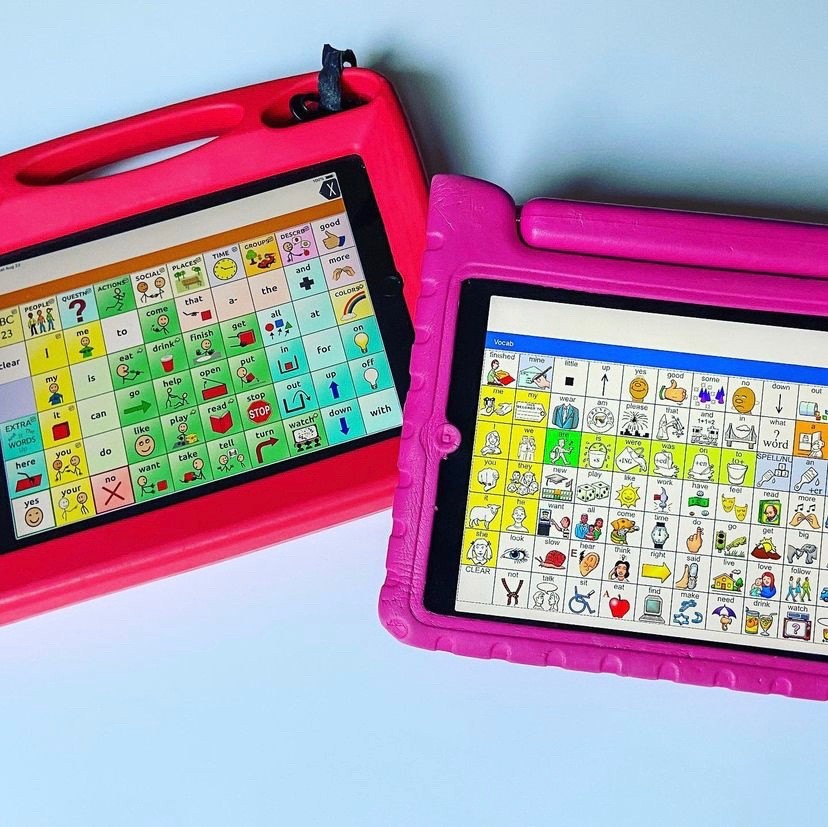Augmentative and Alternative Communication (AAC) systems play a vital role in helping individuals with communication challenges express themselves effectively. Special education teachers recognize the importance of not only implementing AAC in the classroom but also fostering AAC learning use at home. By empowering parents to support AAC, teachers can enhance a child’s communication skills and overall development. In this blog post, we’ll explore how special education teachers can collaborate with parents to facilitate AAC at home.
Check out Assistive Ware for more info on AAC
The journey to effective AAC implementation starts with open and transparent communication between teachers and parents. Initiate discussions to understand parents’ concerns, questions, and goals related to their child’s communication. Share your expertise and experiences, emphasizing the importance of consistent AAC use across home and school environments.
Special education teachers should provide parents with training and resources to help them feel confident about AAC use. Organize workshops, webinars, or one-on-one training sessions that cover AAC systems, device operation, and modeling techniques. Additionally, curate or recommend resources such as books, videos, and online tutorials that parents can use as references.

Collaborate with parents to select an AAC system that aligns with their child’s needs and preferences. Whether it’s a dedicated device, communication app, or low-tech options like picture exchange systems, the chosen AAC solution should cater to the child’s communication abilities and comfort.
Ensure that you model AAC use consistently in the classroom. Children learn by imitating, so when they observe their teachers and peers effectively using AAC, they are more likely to mimic those behaviors. Encourage parents to visit the school to see AAC modeling in action.
A communication notebook is a valuable tool that fosters collaboration between parents and teachers. It provides a platform for recording communication goals, sharing updates on the child’s progress, and discussing strategies. The notebook is a two-way street for maintaining consistent communication between home and school.
Visual schedules are an effective tool for children who benefit from visual support. Work with parents to create a visual schedule that outlines daily routines and activities. The schedule should include AAC usage as an integral part of each activity, promoting consistency in communication.
Stress the importance of AAC integration in all aspects of daily life. Suggest ways for parents to incorporate AAC during daily routines like mealtime, playtime, and bedtime. Reinforce the idea that AAC is not just for academics but also for social interactions, expressing emotions, and more.
Regularly assess the child’s AAC progress and provide feedback to parents. Encourage them to document their observations and share any concerns. Collaboration enables both teachers and parents to make informed adjustments to the AAC program as needed.
Promote peer interactions and playdates that involve children who use AAC. Encourage parents to connect with other families who have children with similar communication needs. Peer interactions provide opportunities for AAC practice in a natural, supportive environment.
This AAC learning journey comes with its own set of challenges. Encourage parents to remain patient and persistent, as progress may not always be linear. Celebrate small victories and maintain a positive outlook.
Empower Paraprofessionals to Use AAC
Using Core Vocabulary in the Classroom
Parent Communication Strategies
Create an Accessible Classroom
The collaboration between special education teachers and parents is instrumental in supporting the use of AAC at home. By fostering open communication, offering training and resources, selecting the right AAC system, modeling AAC at school, creating a communication notebook, developing visual schedules, encouraging AAC integration, monitoring progress, promoting peer interaction, and emphasizing patience and persistence, teachers empower parents to help their child thrive in their communication journey. Together, they can provide a consistent and supportive environment that nurtures effective communication skills in children with special needs.
To learn more about AAC, check out ASHA
What are you looking for?
COPYRIGHT © 2025 Full SPED Ahead